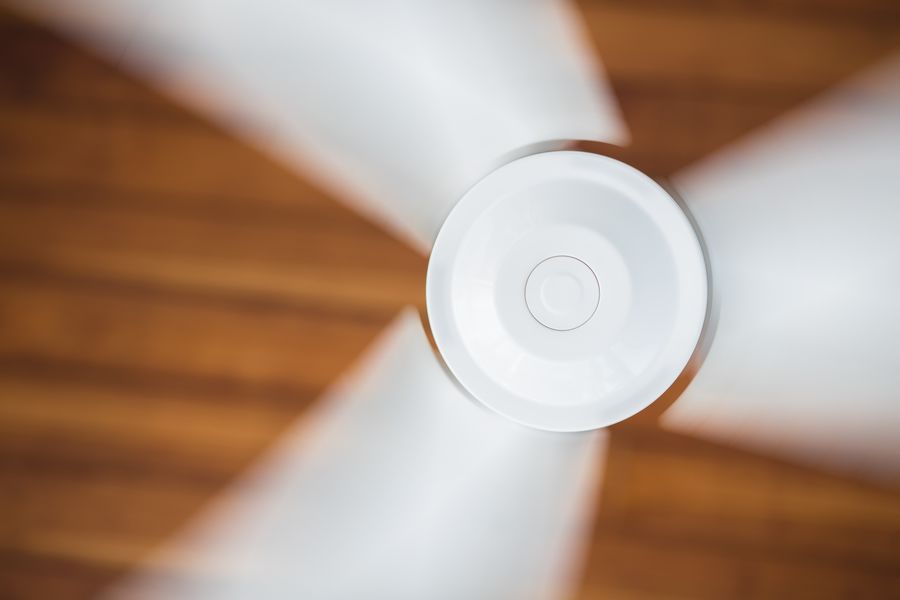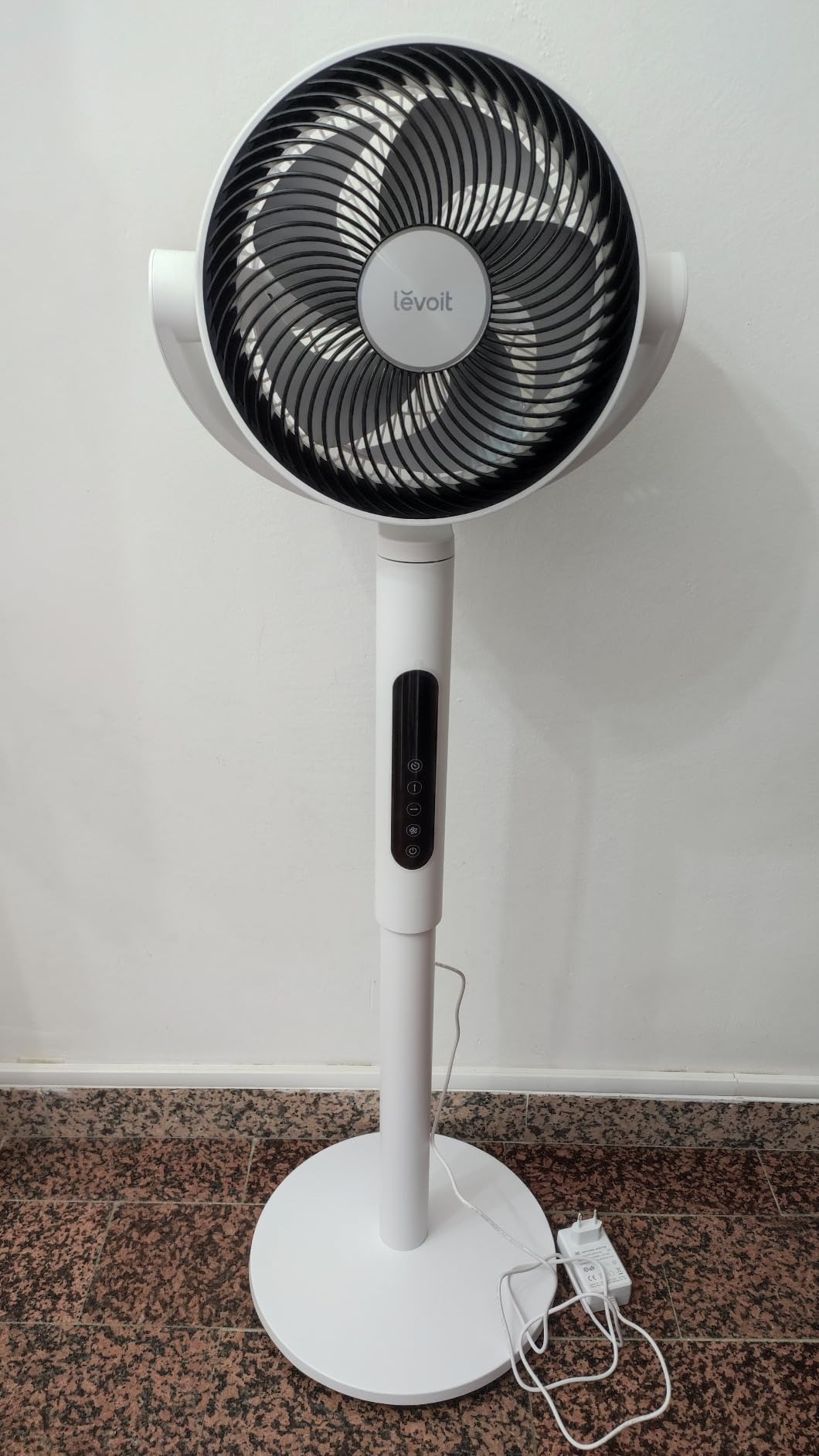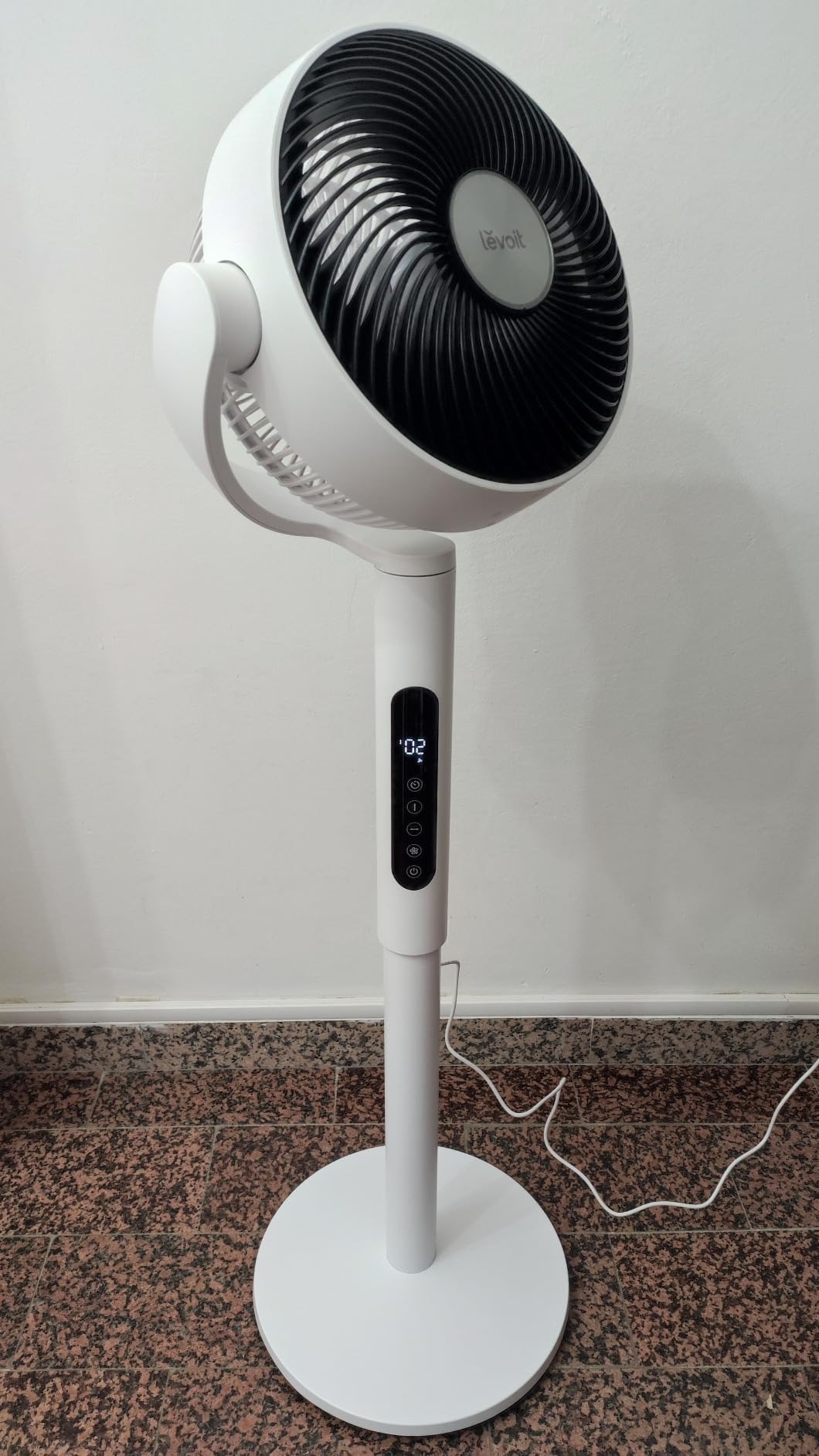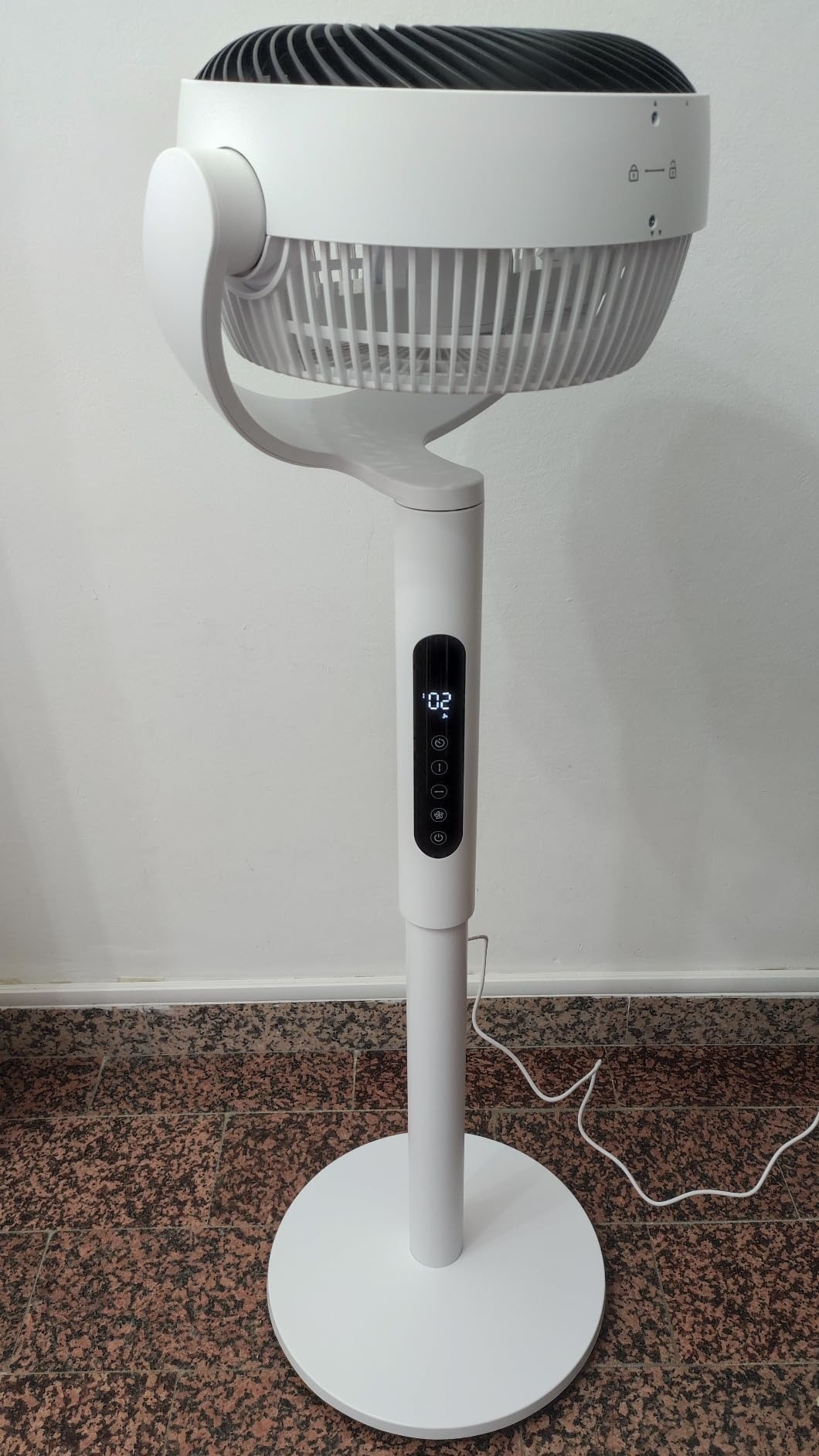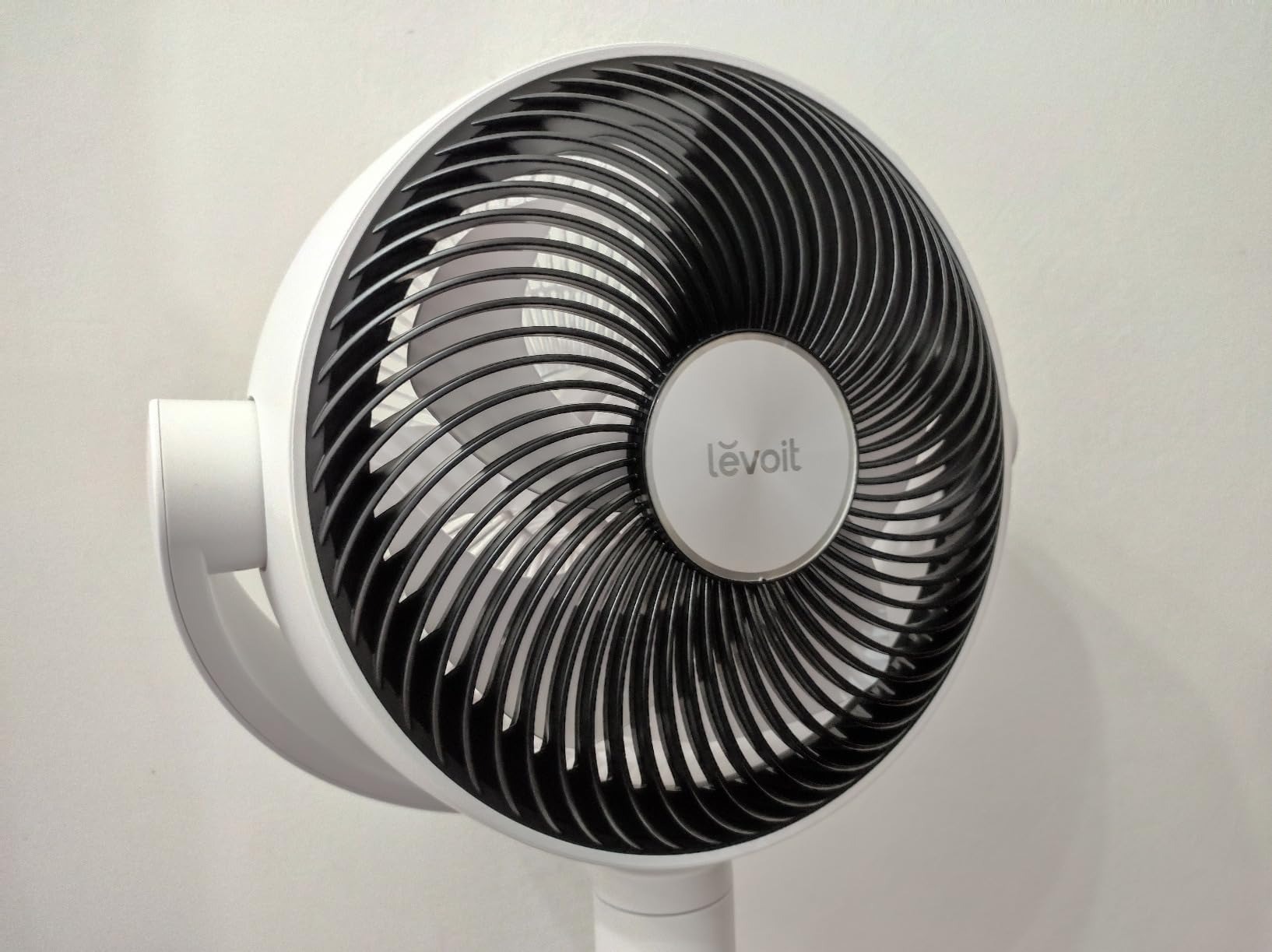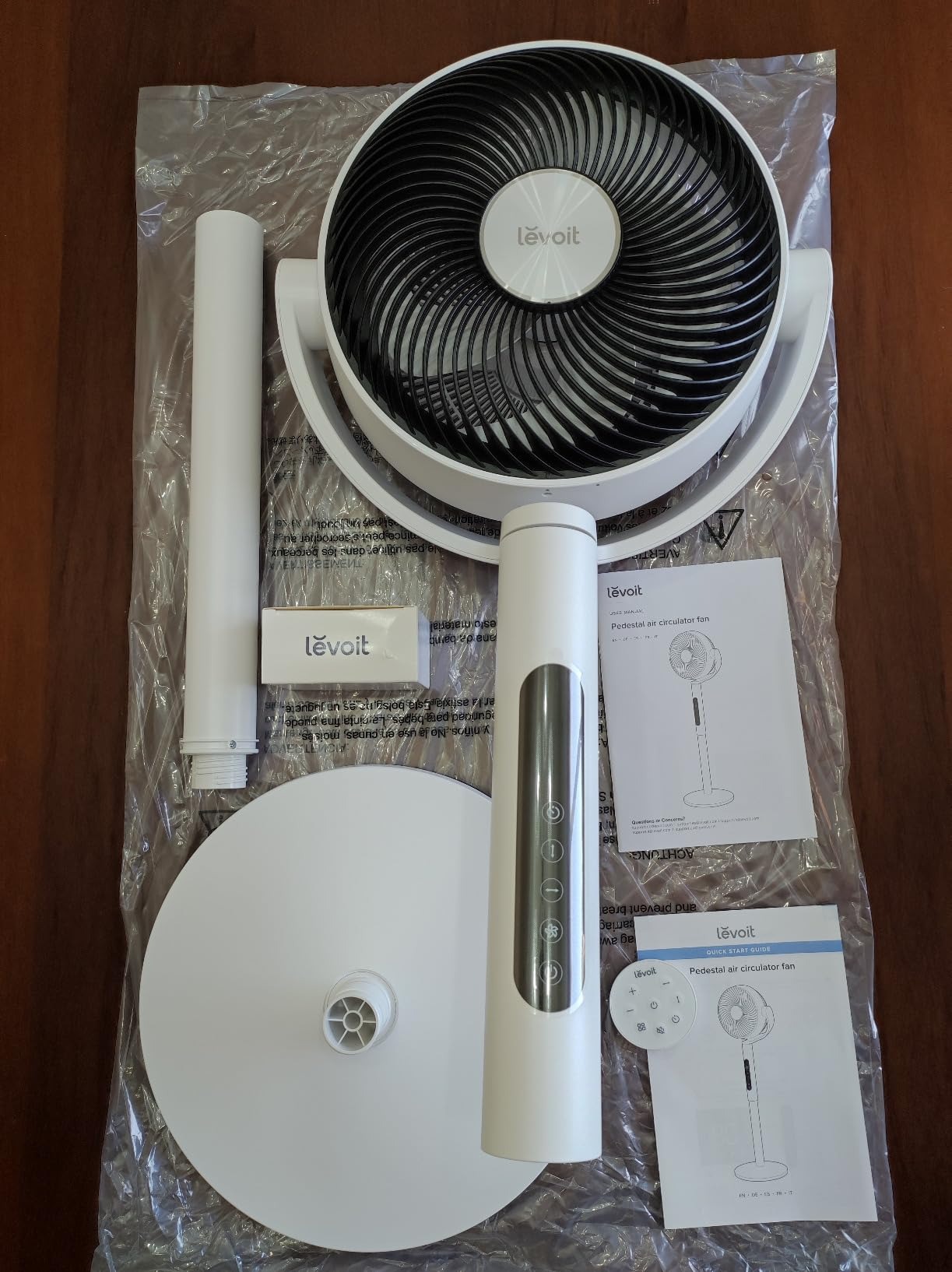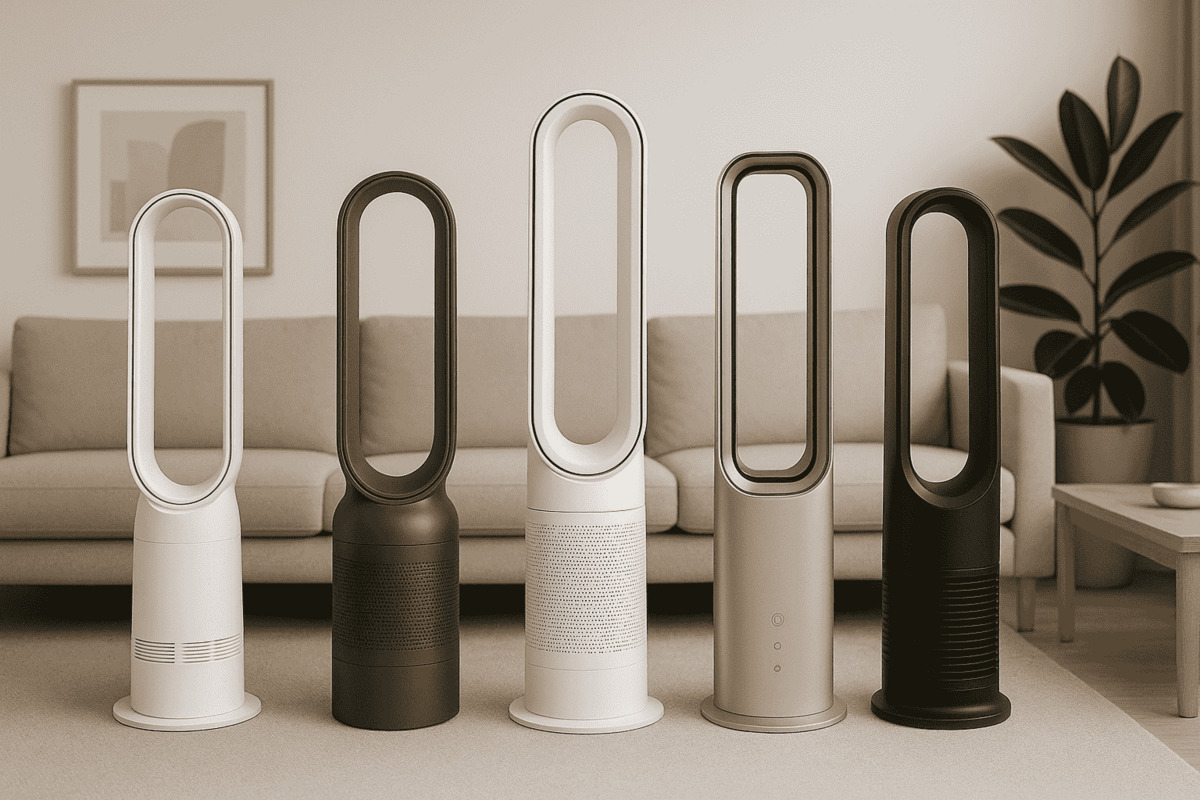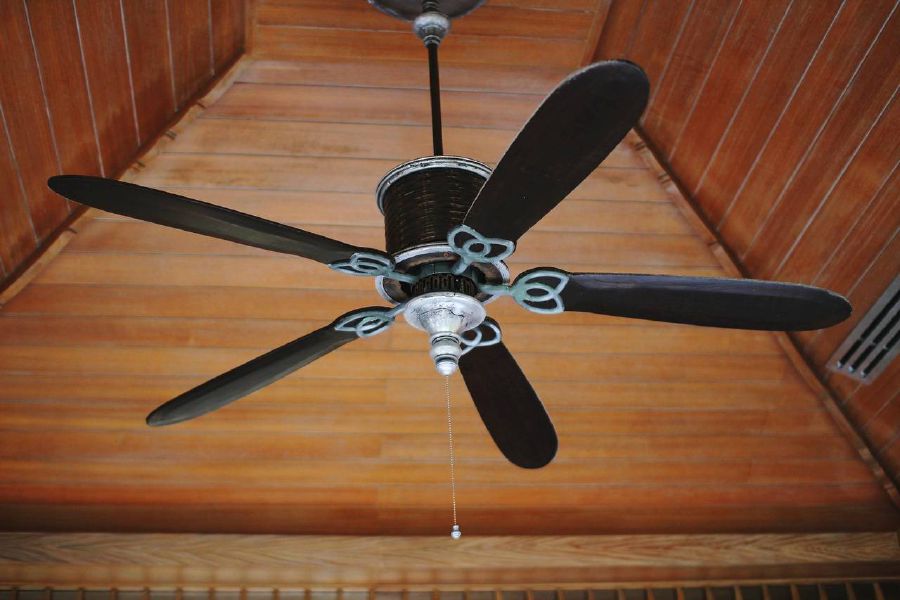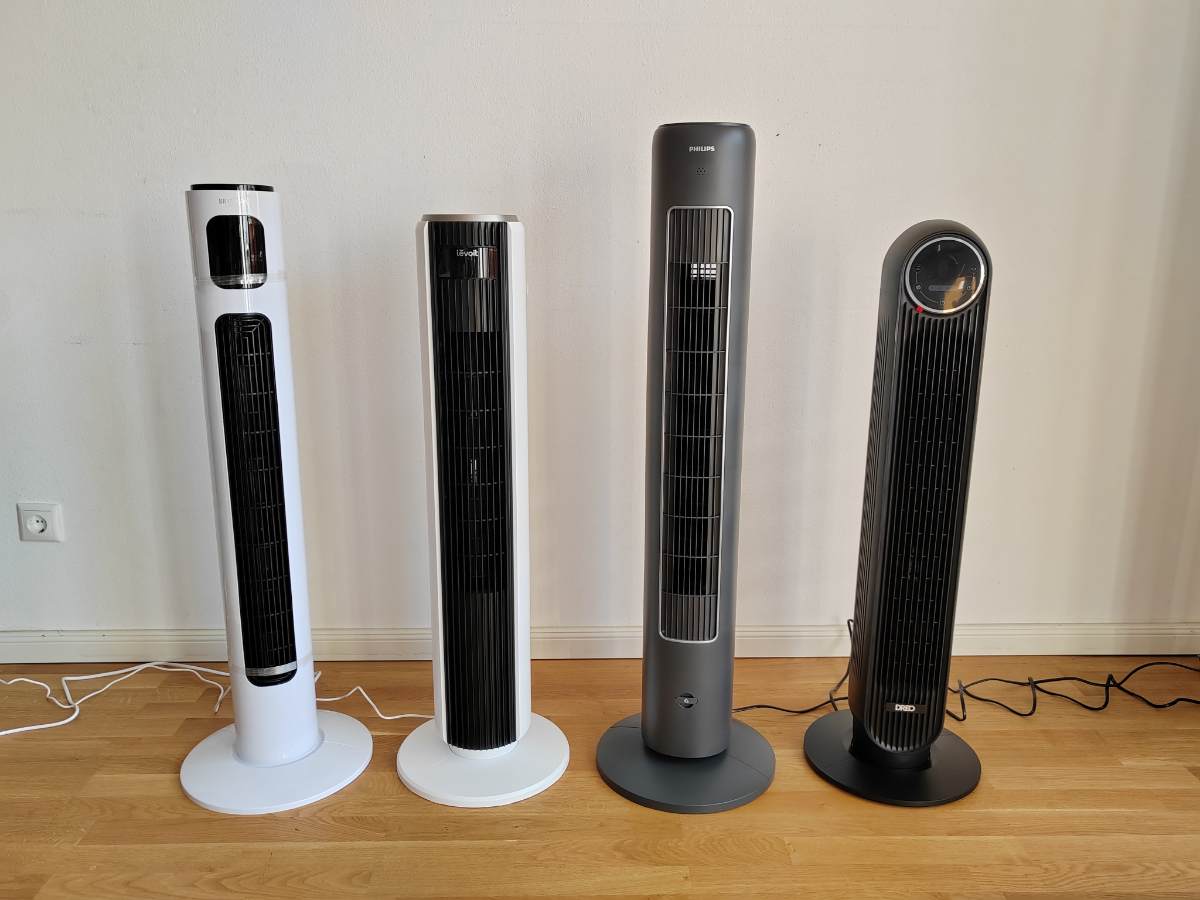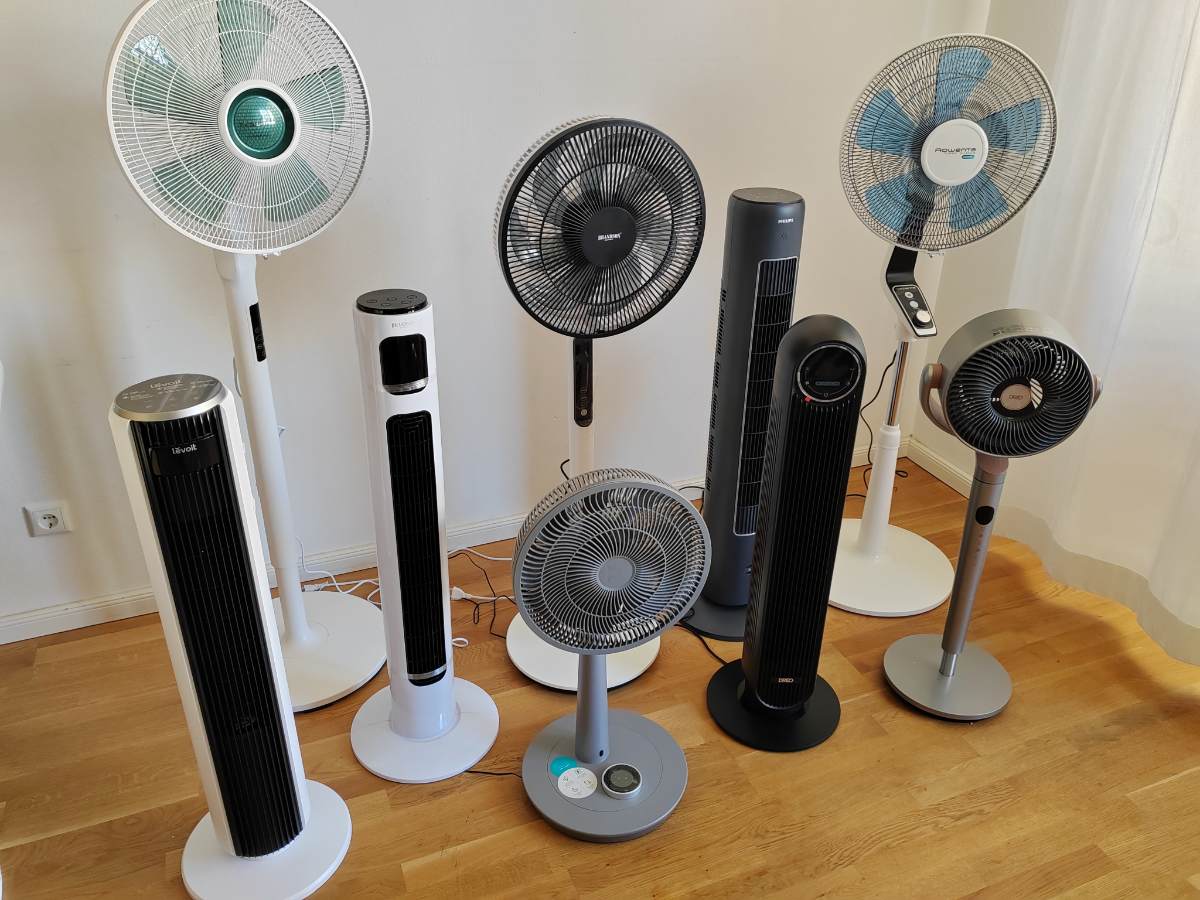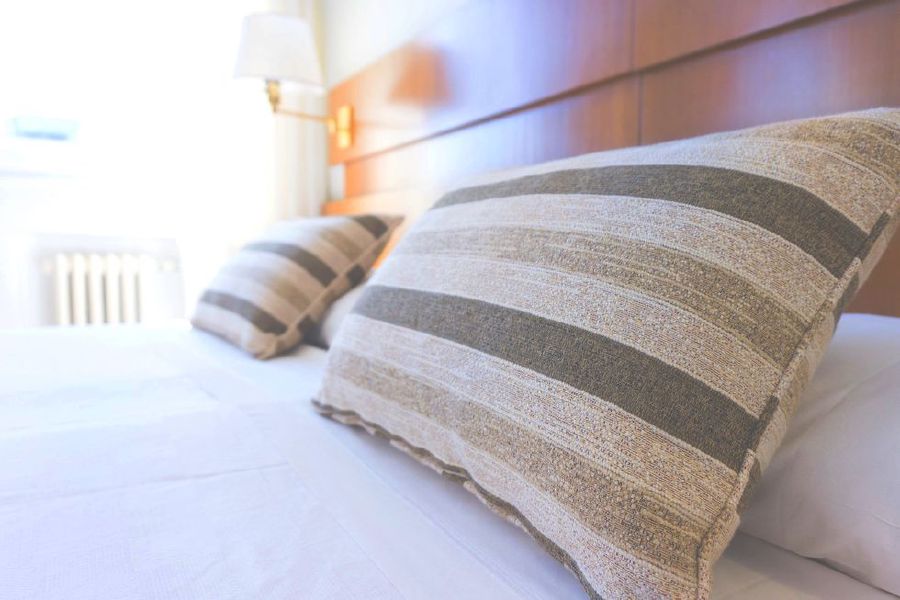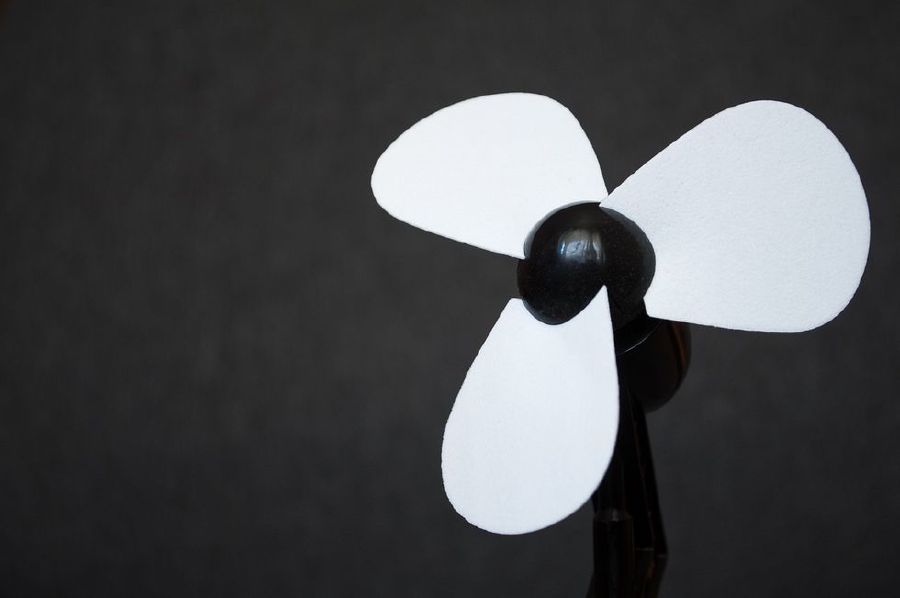Smart home fans in comparison + list of compatible devices
In this article, we take a look at fans with a smart home connection. The range of smart fans on offer is still quite small. This article can be used as an aid to finding a suitable smart fan.
Recommended smart home fans
- Levoit pedestal fan 20 dB (test winner)
- Dreo pedestal fan 25dB (2nd choice)
- Xiaomi Smart Standing Fan 2 (Smart + battery)
Before we take a closer look at the products, here are the most important facts about the smart home:
What is a smart home?
The smart home describes a building whose appliances are equipped with an electronic control system. What's more, the devices are often even connected to the internet and can communicate with each other to some extent.
The main advantage of a smart home is networking. On the one hand, the control of many devices is centralised in one place (e.g. smartphone app). On the other hand, communication between the devices helps to heat more efficiently, for example. Here are a few possible applications:
- Lighting connected to motion detectors, light sensors or smartphone position data only switches on when it is needed.
- Heating systems learn when and how many people are at home and at what time based on the smartphone's position data or input from the user.
- The ventilation switches on if the humidity is too high or the air quality is too low.
- A ceiling fan with SmartHome function supports the exchange of air as soon as a window is opened.
- The light colour and lighting mood are adapted to the time of day. A reduced proportion of blue light in the evening helps you fall asleep [ 1 ] .
On the one hand, the aim of smart homes is to provide more comfort within your own four walls. On the other hand, the use of smart appliances can save energy costs. This is particularly worthwhile when it comes to heating, ventilation and lighting. Smart coffee machines contribute less to saving energy, but can be practical or at least interesting.
Advantages of smart home ventilation
With smart heating, the savings potential is obvious. But what about ventilation and airing? Are there ways to save money with smart appliances here too?
This question is difficult to answer. Savings can certainly be achieved with ventilation systems permanently installed in the building. For example, by ventilating as soon as the temperature difference between inside and outside is low. For example, if the heating is turned down as soon as the last person has left the house.
Transportable fans have much less potential to help you save on heating costs. However, they can provide a more pleasant indoor climate. They also often achieve this more reliably if they are electronically and smart can be controlled.
Many smart home fans don't just get air moving. They can also work with Integrated air filters or humidifiers come up with. In combination with suitable sensors in the appliance, it can determine for itself when it makes sense to filter the air.
Support for air exchange
A fan primarily provides a cooling breeze. You can also use it to help with ventilation. Depending on the layout of the room and the size of the windows, the air exchange may take longer or shorter. If the windows are only on one side of the room, for example, there may not be a proper air flow.
Depending on the size of the room, one or more smart fans can help with air exchange. They actively generate a stronger air flow and complete air exchange is achieved more quickly. Especially in winter, this can Save heating costs. In winter, the room air should be exchanged as quickly as possible so that as little heat energy as possible is lost.
Here you will find further advice and Ventilation basics.
In addition to the frequently used stand or Tower fansceiling fans with SmartHome function can also be used for air exchange. In my opinion, a permanently installed ceiling fan is worth considering for the following reasons:
- It takes up little to no usable space.
- With its winter and summer modes, it is useful for ventilation at any time of year.
- It is visually appealing.
- Thanks to the size of the blades, it does not have to turn as quickly and works quietly.
Here you will find further information about Ceiling fans.
Smart Home capable fans
Now that we've shed some light on the peculiarities of the smart home, let's take a look at suitable devices. As mentioned at the beginning, the selection of smart fans is still quite small. Hopefully that makes this list all the more useful for you.
Levoit 20dB pedestal fan with intelligent control via APP & Alexa (video)
Advantages
❌ Disadvantages
The Levoit pedestal fan was my favourite this summer - and not just because of its powerful performance, but above all because of its smart controls. You realise how well thought-out the device is as soon as you set it up: easy to assemble, safe to stand on and visually modern.
But what particularly impressed me was the integration into the smart home. I connected the fan directly to Alexa - and it works seamlessly. A quick voice command in the morning and it's already running at the desired level. The VeSync app is also super practical: I can switch between the 12 speed levels, control the oscillation or set a timer from the comfort of my sofa. Even sleep mode can be activated via the app - ideal if you don't want to get up in the evening.
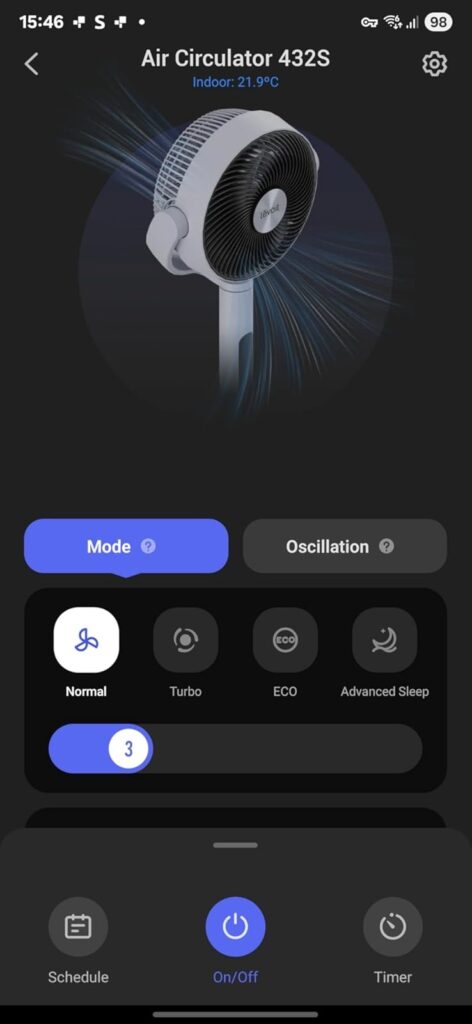
In the bedroom, I particularly appreciate the quiet levels - up to level 3, hardly any noise is perceptible. The display can be switched off completely using the remote control or app, which is extremely convenient at night. And if you do want to switch it over in the middle of the night, you can do so without getting up using the app.
The air flow is powerful and far-reaching, even larger rooms are evenly ventilated. The horizontal and vertical swivelling function can be flexibly adjusted - also via app or voice command.
The bottom line: If you love smart home-enabled devices and don't want to compromise on volume or performance, you'll be very happy with this fan.
Dreo 25dB quiet smart pedestal fan - 2nd place
Advantages
❌ Disadvantages
I was delighted with how smoothly the fan connected to the Dreo app as soon as I set it up. Whether via Alexa or Google Home - voice commands such as "Set the fan to level 3" or "Switch on oscillation" work immediately. This is especially handy at night when you stay in bed and still want to change settings.
The app itself offers a wide range of options: I can individually adjust both horizontal (120°) and vertical (105°) oscillation, save fixed angles or even set temperature-controlled programmes. A real highlight for technology enthusiasts.
Operation via remote control is also intuitive, but I usually use my smartphone - quick access, lots of options. The LED screen can be switched off if required, which is particularly convenient at night.
In terms of performance: the air flow is powerful and reaches up to 30 metres - you notice this immediately in the room. And at a whisper-quiet 25 dB on the lower settings. I used it continuously in the bedroom - even sensitive sleepers are not disturbed. At a low setting, it produces a pleasant, quiet white noise without humming.
The design and workmanship are also excellent. Modern, space-saving and stable thanks to the heavy but compact foot section. The height adjustment is easy to adjust - practical, depending on whether it is placed by the bed, in the living room or at the desk.
All in all, the Dreo is a smart fan for anyone who appreciates technology, comfort and peace and quiet - and is prepared to invest a little more for well thought-out functions.
Xiaomi pedestal fan - Smart & chic
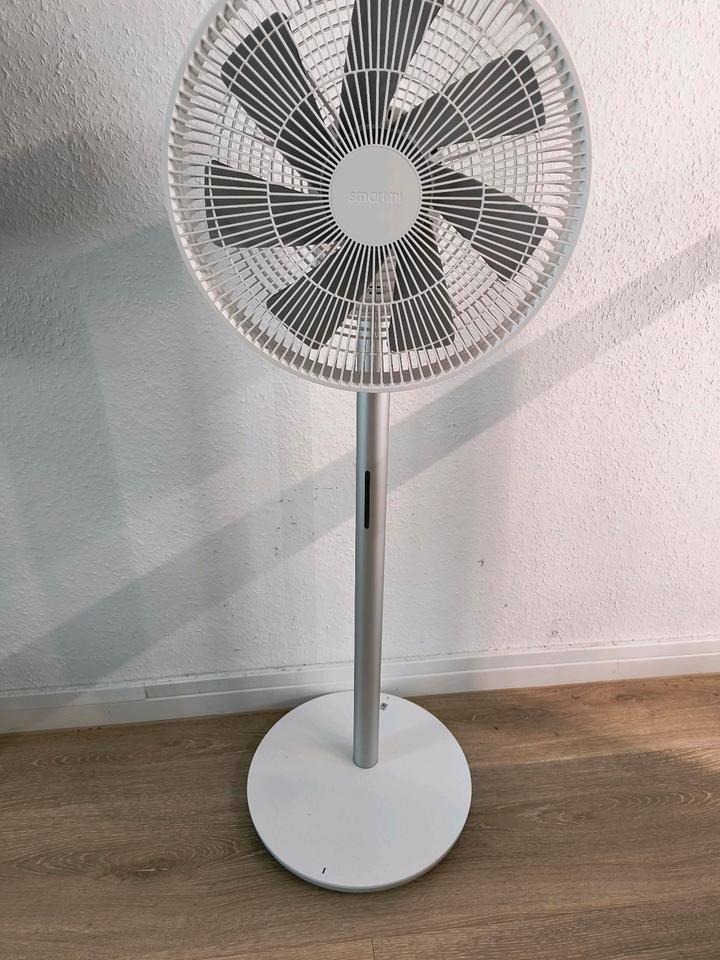
Advantages
❌ Disadvantages
Integrated battery
modern design
Natural wind mode
Quiet
No air filter
No fan heater
What sets the Xiaomi fan apart from most other models is its rechargeable battery. The integrated energy storage makes it easy to take the fan with you. As it is in the Battery operation no longer requires a power socket, you can also set it up in the garden next to a sun lounger.
The minimalist design I personally find the design of the fan appealing, but taste is debatable.
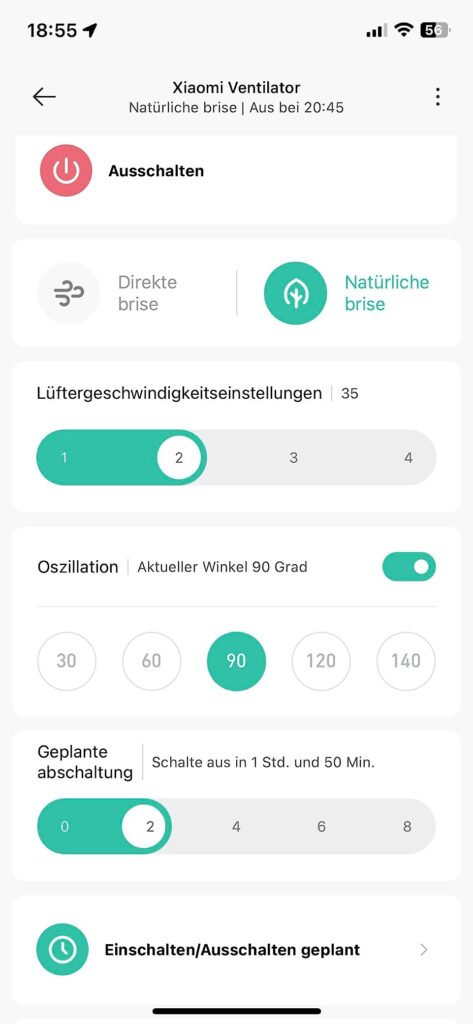
The total seven rotor blades provide a good air flow at various intensity levels. You can choose between Four speed levels choose. In my opinion, the fan is quiet enough in the first setting to operate it in the bedroom at night. According to the manufacturer, at the first intensity level, the fan is around 29dB out loud.
An important plus point of the smart Xiaomi fan is the Wind mode. The device automatically varies the intensity of the air flow. This creates the feeling of a natural wind, which does not always blow with the same strength.
By the way: In the brand name, the "X" is pronounced like an "sch".
Many people already know the Xiaomi brand. Xiaomi manufactures smartphones, smart household appliances and fitness trackers, among other things. As this fan works together with an associated app, it is good to know that there is a well-known brand behind the app. It is not uncommon for apps for smart devices to be knitted with a hot needle. The app for this fan, on the other hand, is quite impressive.
Sichler WLAN tower fan
Air humidification
Oscillation
Supports Amazon Alexa and Google Home
No air filter
Loud key tones
The tower fan from Sichler domestic appliances can also be used as a fan for humidifying the air.
It is well suited for Rooms up to approx. 15m² and can produce up to 808m³ Circulate air.
You can set the desired intensity via the app or on the device.
The upper part of the model can swivel back and forth on the stand. This allows the air flow to reach more areas in the room. The Oscillation also helps to distribute the air more evenly in the room.
Dyson Pure Hot + Cool Link
Air filter
Integrated fan heater
Quiet in operation
Several sensors
modern design
Relatively high price
Dyson has a range of rotorless fans in its range. If you see the word "Link" in the name, then it is most likely a smart device - i.e. one that works with SmartHome functions is equipped.
What exactly a rotorless fan is and what its advantages and disadvantages are is explained in the article on rotorless fans explained in more detail.
The "Pure Hot + Cool Link" is the full package, so to speak. It can generate a cooling air flow, can swivel back and forth, has a Air filter and can be used as Fan heater can be used.
The built-in Sensors record the most important data such as the current temperature and humidity. The device can also Measure air quality. It is available via the corresponding app in the so-called AQI (air quality index) [ 2 ] to.
The supplied Tower Fans with Remote Control is attached to a magnetic point on the device.
Retrofitting fans for smart homes
Not all manufacturers have smart home fans on offer. However, this does not necessarily mean that the devices cannot be integrated into a smart home.
To integrate a fan or an electrical household appliance in general into your smart home, you can use a suitable socket. After all, if you can control the power supply via the socket, you can switch the fan on and off.
However, for fans with a wide range of functions in particular, it would be a shame to only be able to switch them on and off. That's why I recommend simpler fans for the solution with a smart socket: Table and pedestal fans are often well suited for this purpose.
Most tower fans are equipped with several technical functions. I would therefore not recommend controlling tower fans via a smart socket.
What is a smart socket?
A Smart Home socket is basically an intermediate piece. It is plugged into the normal socket and the plug is plugged into it. With the smart socket, you can easily retrofit the sockets in your home for the smart home.
Advantages and disadvantages of retrofitting
The advantage of retrofitting using the smart socket is the Simplicity. Not only fans can be made smart in this way. It can also be used for small lamps, for example. I use it to control a bedside lamp whose cable I wanted to hide behind the bedside table. By controlling it via the app, I don't have to search for the switch on the cable for long.
The disadvantage of retrofitting is that it really only makes switching on and off smart. More precise settings - such as the intensity of the air flow - cannot be controlled via this. Nevertheless, in my opinion it can be a good alternative depending on the appliance and location. Especially if you would otherwise have to buy a whole new fan. A smart socket is generally the Cheaper alternative.
Conclusion
Controlling devices in the home via smartphone or voice is simply fun. Although it only makes everyday life slightly easier, the feeling of a modern home is more in the foreground.
I recommend devices that are compatible with common systems such as Google Home, Amazon Alexa or Siri. Because the Voice control has turned out to be the most practical way for me to operate it.
Sources
[1] ↑ http://www.3sat.de/page/?source=/nano/cstuecke/122503/index.html
[2] ↑ https://aqicn.org/map/germany/de/
